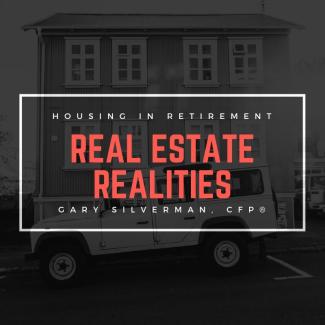
Housing in Retirement
There has been an assumption made by many when looking forward to their retirement: they would downsize their home and pocket the savings. After all, most people have a small (if any) amount saved up for retirement. For those who are fortunate enough to own a home, that home is their largest asset. Cashing in at least part of that asset might be the only way for them to have cash above and beyond their Social Security income.
However, the current batch of retirees (baby boomers) doesn’t seem to have gotten the message. Of course, many people, once the kids have left the house and they near the end of their careers, still opt to move to a smaller place. But according to a Chase Bank survey (reported in USA Today), that number is dropping significantly.
Reasons for this trend are probably numerous. The homeowners had kids later in life, so they needed the larger home longer—and those kids hung around into their mid- to late-twenties extending that need. In many areas of the country, there are no suitable residences to downsize into. While they may find a smaller place near where they currently live, it’s probably not inexpensive enough to justify a purchase. Moving to where smaller less expensive homes are being built means leaving friends and familiarity behind.
Part of the problem mentioned above is the same one that millennials are facing. In many locales, the housing industry just isn’t building homes the size of the traditional starter home or one you’d typically downsize to. It’s simple economics: For the same amount of effort and expense, they get a better profit building larger upscale homes. No doubt this will moderate a bit as supply and demand eventually even things out, but that can take quite a while.
There are other trends affecting retiree housing as well. If you travel to most any large urban area, you’ll see retirement communities springing up amid the urban sprawl. These are not the trailer parks of old with golf carts zipping around (though those are still around). These are complexes of condos whose interiors look more like a hotel’s presidential suite than an apartment. The communities have pools, extensive exercise facilities, many activities and ample parking for a community of very active seniors. And being inside a metroplex they also offer easy access to the city’s education, entertainment, and activities.
The takeaway: In retirement planning don’t assume you’ll be able to downsize into a smaller home. Instead, put some thought into it and plan. If you follow my writings, you know I was looking at my next residence. While nowhere near retired, I am a youthful 61-year-old. I figured we’d downsize. In our situation we weren’t looking to necessarily move into a cheaper place, but rather a smaller place—one with newer everything and easier to maintain.
Next time, I’ll tell you what I did. It’s not for everyone, but it will illustrate the thought process you should go through when working out your own future.
Gary Silverman, CFP® is the founder of Personal Money Planning, LLC, a Wichita Falls retirement planning and investment management firm and author of Real World Investing.

